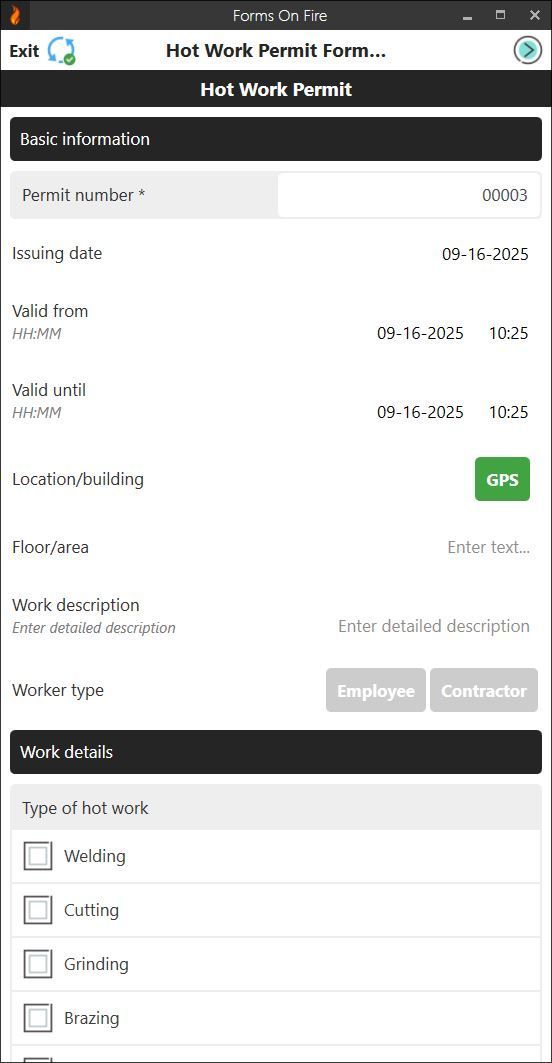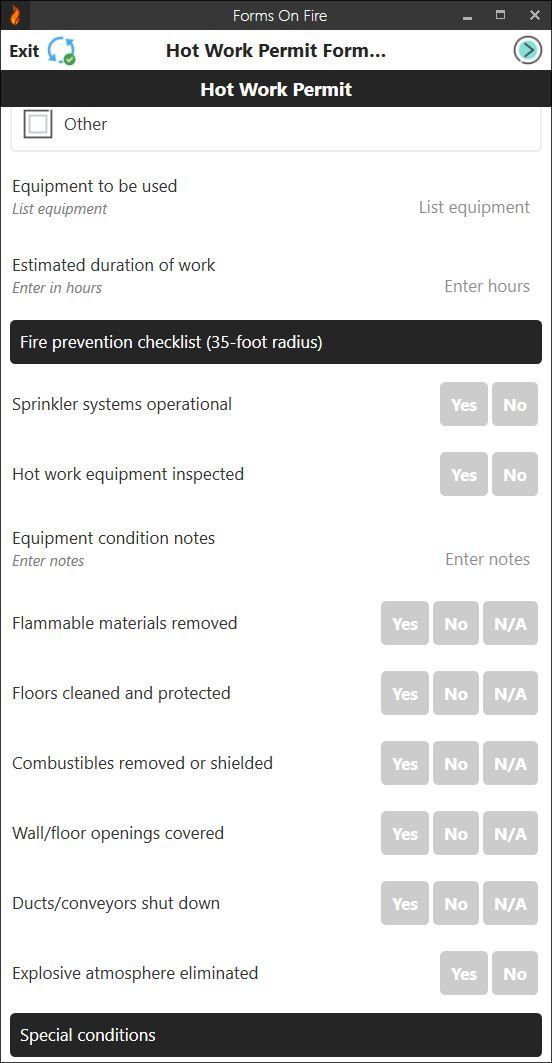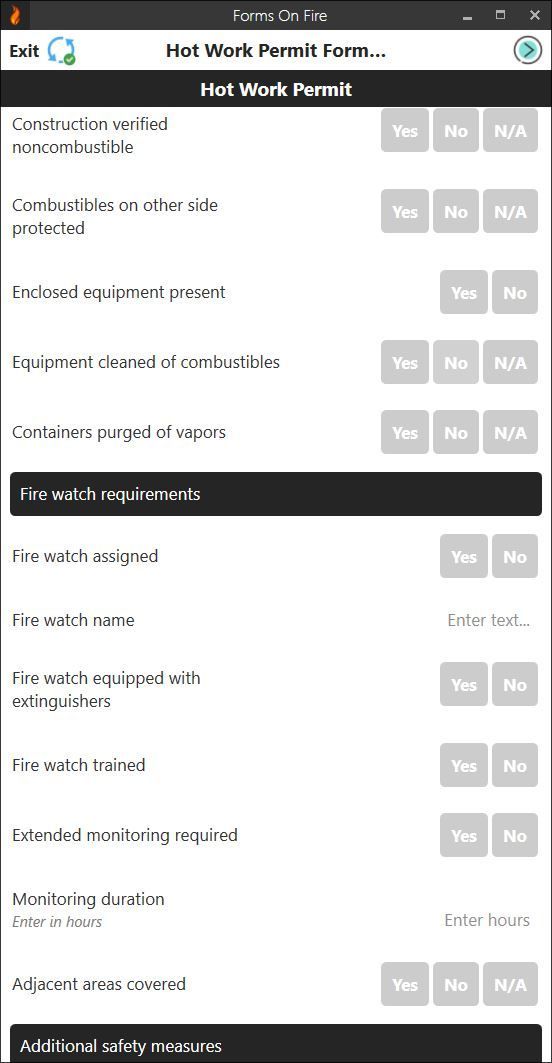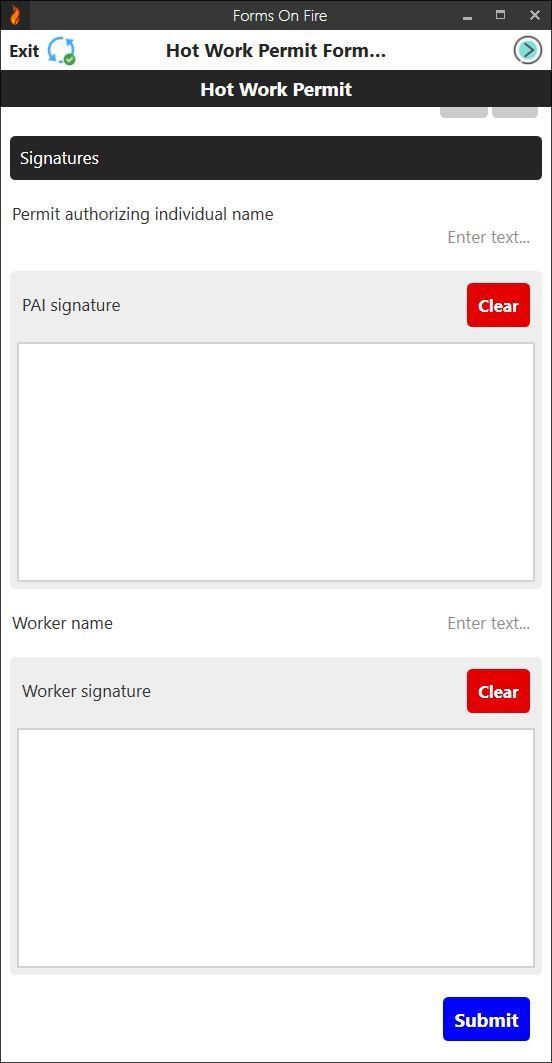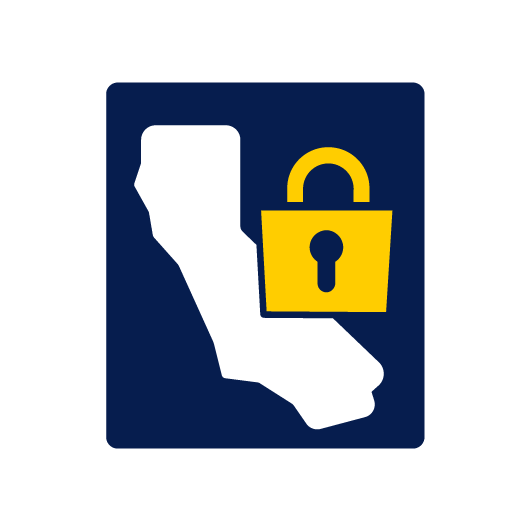Get a Digital Hot Work Permit Form Template
Your paper hot work permits are creating safety gaps and project delays. Smudged signatures, missing checklists, and lost forms turn what should be a quick safety check into a compliance nightmare.
While you're hunting down supervisors and deciphering illegible handwriting, work stops and costs pile up. One missing permit could mean failed inspections, project shutdowns, or worse… preventable accidents.
Digital hot work permit templates eliminate these headaches completely. Through this article, you'll learn what hot work permits include, the key benefits of going digital, and where to get a ready-to-use template.
What is a hot work permit?
A hot work permit is your safety checkpoint before anyone picks up a torch, grinder, or any equipment that creates heat, sparks, or open flames. Think of it as a formal "safety handshake" between management and workers that says it's safe to work.
Before any hot work begins, a qualified person inspects the work area, identifies fire hazards, puts safety measures in place, and documents everything on the permit. The permit gets signed off by both a supervisor and the person doing the work. This is your insurance policy against fires and accidents.
You need these permits whenever work involves:
- Welding, brazing, or soldering
- Cutting with torches or plasma cutters
- Grinding that produces sparks
- Using open flames for heating or thawing
- Any equipment that could ignite flammable materials
The permit isn't just required in obvious high-risk areas like refineries or chemical plants. You need one in regular commercial buildings, hospitals, schools, and anywhere combustible materials might be present. Even something as simple as welding a bracket in an office building requires a permit if there's any chance of igniting carpet, ceiling tiles, or wall coverings.
Most permits are valid for a specific shift or up to 8 hours, though some facilities allow 24-hour permits for ongoing projects. The key is that someone qualified has to physically check the area before work starts each day.
What does a hot work permit form cover?
A hot work permit form captures all the safety essentials in one organized checklist:
- Work details: What's being done, where, when, and by whom.
- Hazard identification: Potential fire risks and safety concerns in the area.
- Fire prevention measures: Steps taken to eliminate or control ignition sources.
- Emergency procedures: Response plans and contact information.
- Sign-off requirements: Authorizations from supervisors and workers.
The work description section documents the specific hot work activity, equipment being used, and exact location. You'll also see fields for work duration, responsible contractor or department, and contact information for key personnel.
Fire prevention gets the most attention on these forms. Expect checklists covering:
- Flammable material removal from the work area
- Fire watch assignments and responsibilities
- Ventilation requirements and air movement control
- Available fire extinguishing equipment verification
- Sprinkler system operational confirmation
- Fire department notifications when required.
The permit also addresses atmospheric testing when needed, which is particularly important in confined spaces or areas where gases might accumulate. Some forms include sections for lockout/tagout procedures if the hot work affects nearby equipment or utilities.
Now, these forms vary depending on where you're using them. A basic office building permit might be two pages, while a petrochemical facility's permit could run four to six pages with detailed atmospheric monitoring requirements and specialized fire suppression protocols.
Different environments need different approaches:
- Marine facilities: Include vessel ventilation and bilge inspection requirements.
- Hospitals: Add patient evacuation procedures and medical gas system isolation.
- Construction sites: Emphasize weather conditions and coordination with other trades.
- High-risk facilities: Require gas testing results, specialized fire watch training, and photographic documentation.
Choose a permit template that matches your facility's risk level; don't overcomplicate a simple job, but don't shortcut safety in complex environments either.
Get a hot work permit template from Forms On Fire
Instead of juggling clipboards and filing cabinets, with Forms on Fire, you can build custom forms that work on any device: phones, tablets, or computers. The platform handles everything from simple checklists to complex audits with conditional logic and automated routing.
Benefits of using a digital hot work permit:
- Instant accessibility: Your permits become accessible from anywhere on the job site.
- Complete submissions: Digital forms eliminate the classic problem of incomplete permits by setting required fields that won't let users submit until everything's filled out properly.
- Real-time visibility: Supervisors can see permit status instantly, fire watch personnel get automatic notifications, and safety managers can pull compliance reports without digging through paper stacks.
- Digital audit trail: Digital timestamps create an audit trail that shows exactly when permits were issued, started, and completed.
- Photo integration: Document work area conditions with embedded images.
- Centralized storage: All permits are stored securely in one searchable database.
The Forms On Fire hot work permit template includes all the essential elements we covered earlier. The best part? Our template is fully customizable, so you can add facility-specific requirements or industry regulations without starting from scratch.
Ready to streamline your hot work permit process? Start a free trial of Forms On Fire and get access to our huge template database.
Other forms and checklists you might be interested in:
- Confined Space Entry Checklist
- Job Hazard Analysis Form
- Workplace Safety Inspection Checklist
- PPE Checklist
- Crew Timesheet Template
- Daily Work Report Template
FAQs about hot work permits
When is a hot work permit necessary?
Anytime work involves open flames, sparks, or heat sources that could ignite materials nearby. This includes welding, cutting, grinding, soldering, or using torches.
Who needs hot work permits?
Anyone performing hot work activities: contractors, maintenance staff, welders, or facility employees. Both the worker and supervising personnel need to understand permit requirements.
Are there any requirements for obtaining a hot work permit?
Yes. You'll need a qualified person to inspect the work area, identify hazards, implement fire prevention measures, and ensure proper equipment is available.
Who issues the hot work permit?
A designated qualified person: usually a supervisor, safety coordinator, or facility manager who's been trained in hot work hazard assessment. They must have the authority to authorize the work and knowledge of the facility's fire protection systems.
For how long is a hot work permit valid?
Usually, permits are valid for one work shift or up to 24 hours. Some facilities allow longer permits (up to a week or more) for ongoing projects, but the work area must be re-inspected daily before work resumes.
What are the legal requirements for hot work permits?
OSHA's general duty clause requires employers to provide safe workplaces, and many local fire codes mandate hot work permits. Requirements vary significantly by location, industry, and facility type.

